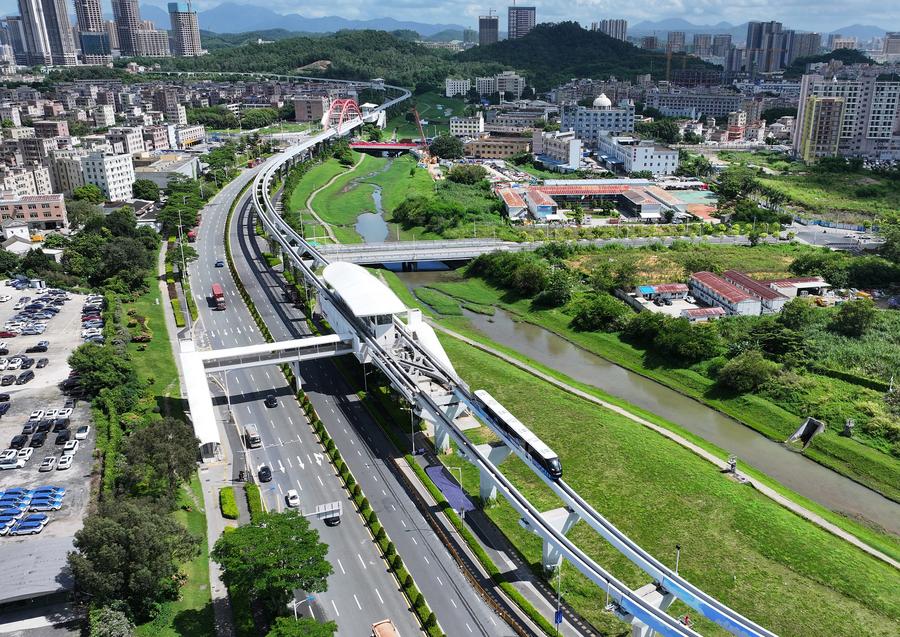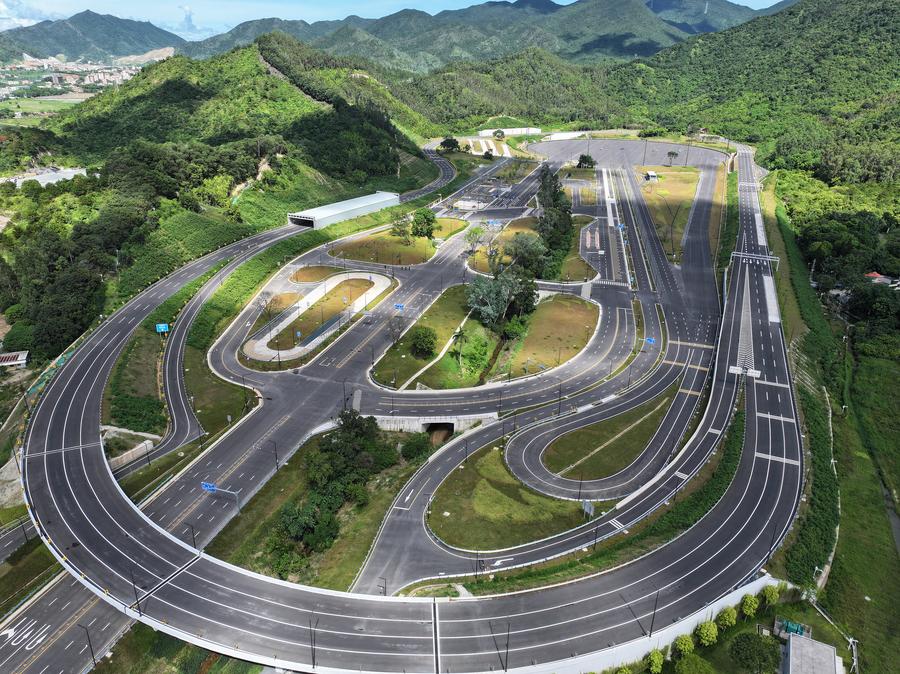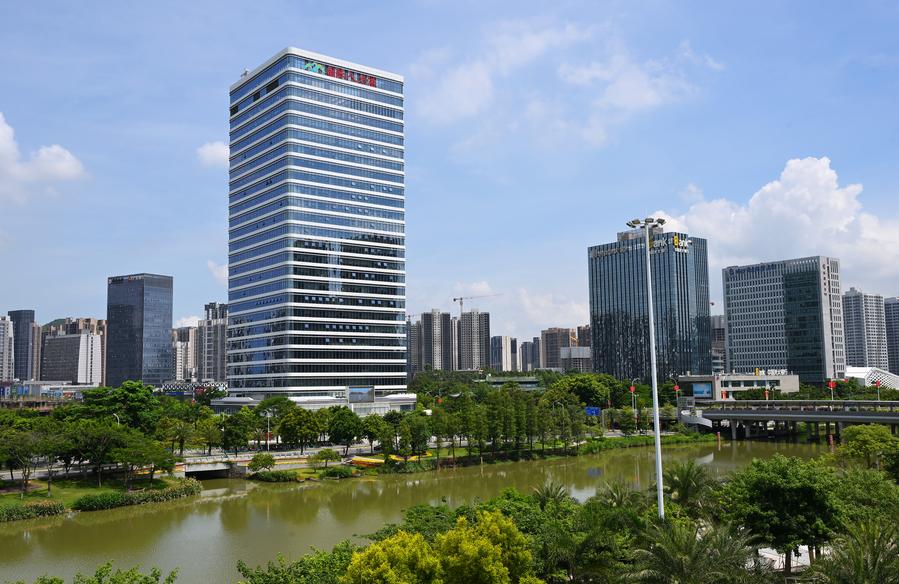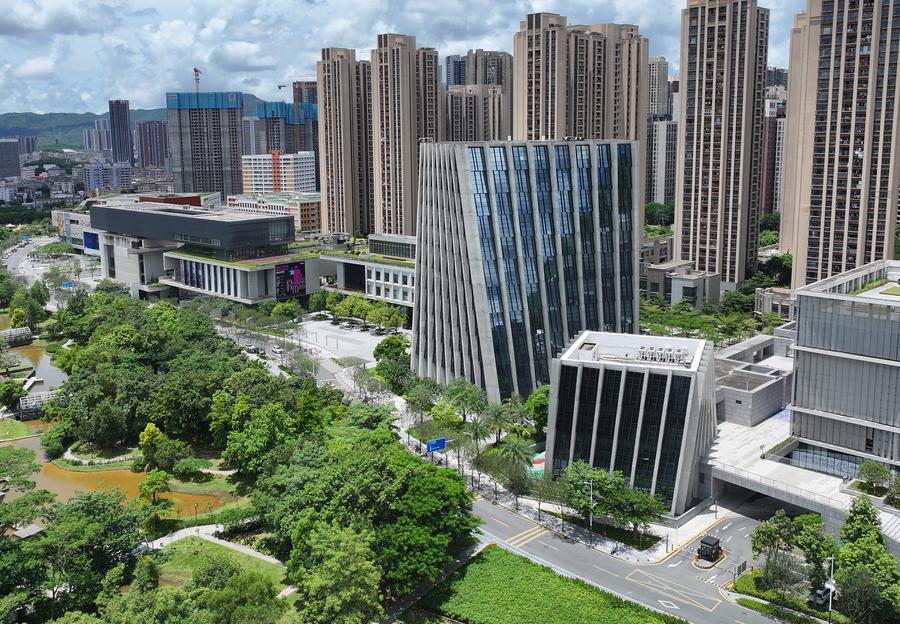China's Guangdong takes lead in new reforms
* Initially emerging as a "world factory," Guangdong has since evolved, striving to establish itself as a global scientific and technological powerhouse.
* As China pushes for deeper comprehensive reforms, with over 300 measures unveiled at the third plenary session of the 20th Communist Party of China Central Committee, Guangdong once again leads the charge. It continues to pioneer efforts that reinforce its position as a beacon of innovation, opening up and creativity.
* Guangdong's reforms extend beyond economic growth. Reforms are carried out in many other areas to improve people's wellbeing.
GUANGZHOU -- Shenzhen, in the vibrant southern Chinese province of Guangdong, is not just a city but a canvas illustrating tomorrow's urban life.
In Shenzhen's Pingshan District, the streets pulse with a symphony of future transportation: yellow unmanned logistic cars pause obediently at red lights before zipping off to deliver piping hot meals; driverless cabs glide effortlessly alongside, ferrying passengers to their destinations; above it all, a fleet of autonomous buses cruise along the elevated rails.

An aerial drone photo shows an autonomous bus running on elevated rails in Pingshan District of Shenzhen, south China's Guangdong Province, July 22, 2024. [Xinhua/Li He]
This captivating scene is the result of Guangdong's bold reforms over the decades. In late 1978, China launched its reform and opening up initiative, designating Guangdong as a testbed by establishing three of the country's first four special economic zones in the province, including Shenzhen.
Initially emerging as a "world factory," Guangdong has since evolved, striving to establish itself as a global scientific and technological powerhouse. As China pushes for deeper comprehensive reforms, with over 300 measures unveiled at the third plenary session of the 20th Communist Party of China Central Committee, Guangdong once again leads the charge. It continues to pioneer efforts that reinforce its position as a beacon of innovation, opening up and creativity.
SUPPORTING INNOVATION
From July 15 to 18, the plenum was held in Beijing to discuss further reforms, with "supporting all-around innovation" as a vital topic. Meanwhile, an innovative demonstration in Shenzhen's Pingshan captured the public's imagination.
At the inauguration of a government-funded facility designed to test intelligent connected vehicles (ICVs) and drones, onlookers were amazed as a drone launched from a built-in docking bay of a moving SUV, then automatically returned and completed a battery swap.
Liu Yingjie, who oversees Pingshan's sci-tech innovation bureau, sees this facility, the first of its kind in the Guangdong-Hong Kong-Macao Greater Bay Area, as Shenzhen's major step in nurturing smart cities and the low-altitude economy, sectors poised to shape China's future development. This progress follows years of institutional and infrastructure support from the city.

An aerial drone photo taken on July 22, 2024 shows a test facility of intelligent connected vehicles (ICVs) and drones in Pingshan District of Shenzhen, south China's Guangdong Province. [Xinhua/Li He]
In August 2022, Shenzhen pioneered China's autonomous vehicle regulation, becoming the first city to implement rules allowing licensed operators to deploy driverless cars on specific roads. Pingshan took a bold step forward, opening its entire area for commercial pilot programs of fully autonomous ICVs, with a network of roads spanning 440 kilometers.
Following Shenzhen's rollout of measures to boost the low-altitude economy in December 2022, helicopter taxis and drone delivery services have emerged in the city.
Represented by Shenzhen's endeavors, Guangdong is endeavoring to foster new industries with its vibrant innovation ecosystem. The province is home to over 75,000 high-tech enterprises, including world-class companies such as EV manufacturer BYD, drone pioneer DJI, and smart device provider Honor.
The province now ranks first among all provincial-level regions in China in terms of key scientific and technological indicators, such as R&D expenditure and the number of R&D personnel and international patent applications.
According to Liu, enterprises' R&D investment accounts for over 98 percent of the total social R&D investment in Pingshan. He highlighted the district government's role as a bridge and pledged to take new measures to boost closer enterprise-led collaboration between industries, universities and research institutes.
EMBRACING OPENING UP
Nansha District in Guangzhou, comparable in size to Singapore, is located at the geographical center of the Greater Bay Area, linking nine major cities in Guangdong with Hong Kong and Macao. Leveraging its prime location and open policies, Nansha has transformed into a crucial gateway, attracting global resources and empowering Chinese enterprises to venture abroad.

This photo taken on July 23, 2024 shows the building of an international talent port in Nansha District of Guangzhou, south China's Guangdong Province. [Xinhua/Li He]
"Just like Guangdong since the late 1970s, Nansha today is thriving on deeper reforms and greater opening up," said Xu Yuqi, deputy head of the reform office under the district's Party committee.
Tam Hio Hong is among the 129 professionals from Hong Kong and Macao who have benefited from Nansha's new policy that recognizes 146 overseas professional qualifications across six major industries. With her Macao legal credentials now recognized, Tam can perform legal services in Nansha, just like mainland lawyers.
Knowing there will be improved measures to facilitate the lives of people from outside the mainland, Tam said that she is more optimistic about her life and career here.
RJE Tech, a Guangzhou-based electronic battery manufacturer, chose Nansha as its R&D and production base because the district is located in the center of the Greater Bay Area and is attractive to talent. Zhu Kunqing, RJE Tech's general manager, said he is impressed with the government's proactive support in helping enterprises achieve their goals.
In October 2023, a government-supervised platform was established in Nansha to help small and medium-sized enterprises invest and do business overseas. Through the platform, professional institutions from overseas provide the enterprises with financial, tax and legal consultations.
According to He Yinghua from the platform, it has served 230 enterprises and signed cooperation memorandums with over 120 entities.
SERVING THE PEOPLE
Guangdong's reforms extend beyond economic growth. Reforms are carried out in many other areas to improve people's wellbeing.

An aerial drone photo taken on July 22, 2024 shows the Pingshan Library in Pingshan District of Shenzhen, south China's Guangdong Province. [Xinhua/Li He]
In Shenzhen's Pingshan District, residents regularly have the opportunity to interact with esteemed figures from various fields at the local library, in addition to a diverse variety of activities.
Lu Qimei, deputy head of the Pingshan Library, highlighted the district's reform of the management system for public cultural facilities. The system now employs talent from relevant sectors to oversee operations, a departure from traditional government-run models. "Professional management ensures diverse and advanced cultural offerings," Lu explained.
Meanwhile, in Guangzhou, an 81-year-old retired teacher surnamed Yang has become the envy of her friends living abroad after sharing photos of her meals from a senior canteen just a 10-minute walk from her home. To her friends' surprise, the meals were prepared by robots.
Yang is one of Guangzhou's 2.09 million seniors aged 60 and above. They can enjoy affordable, diverse meals at over 1,400 senior or community canteens throughout the city. Introduced in 2010, these canteens are subsidized by the government and most of their meals cost less than 15 yuan (around 2 U.S. dollars).
"I am sure we will enjoy even better elderly care services in the years to come," Yang said.
Video reporters: Ruan Shuai, Pan Yujie and Li Sijia; Video editor: Zhang Nan, Liu Xiaorui, Zheng Xin, Zhu Jianhui and Li Ziwei
























